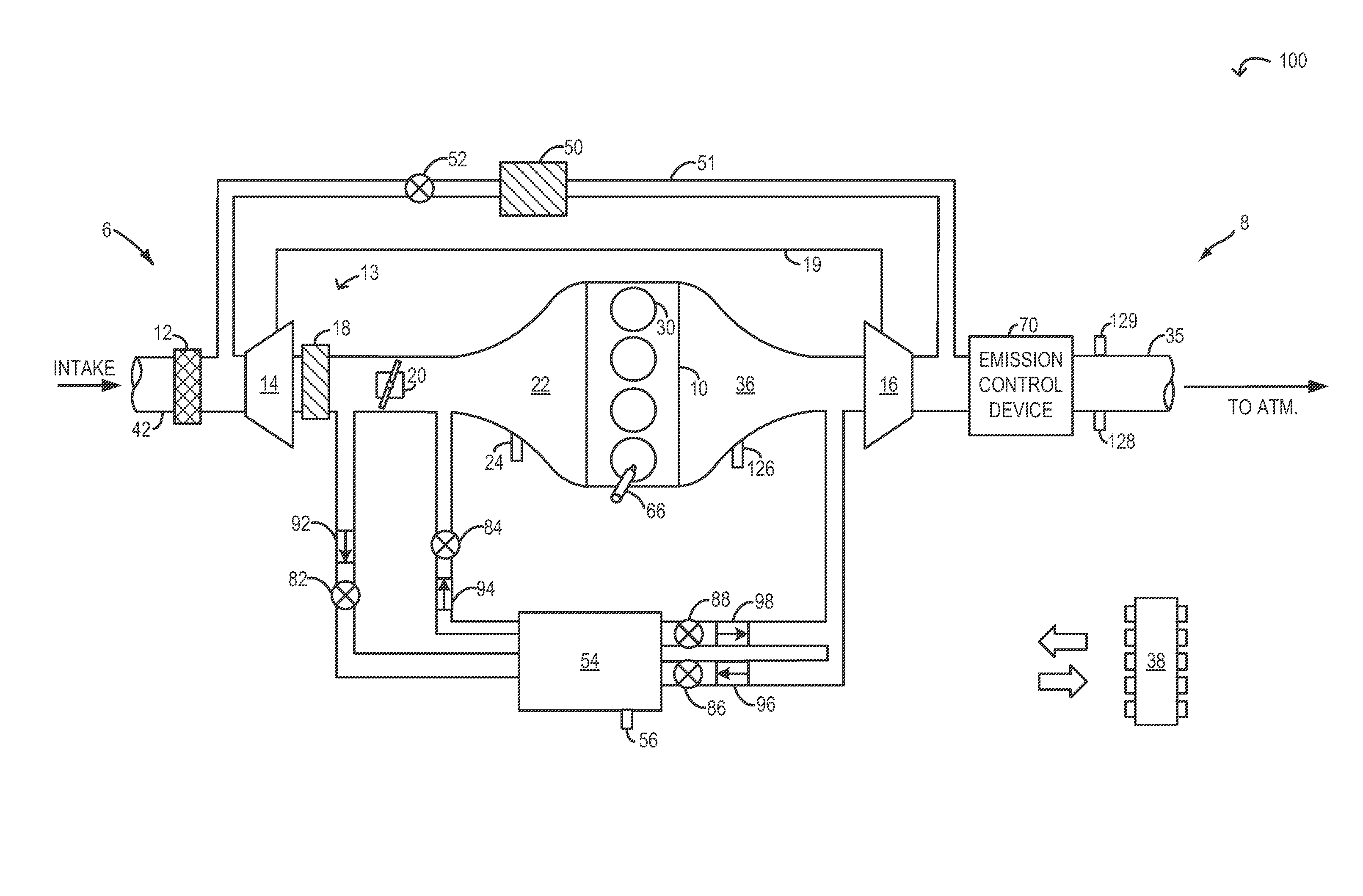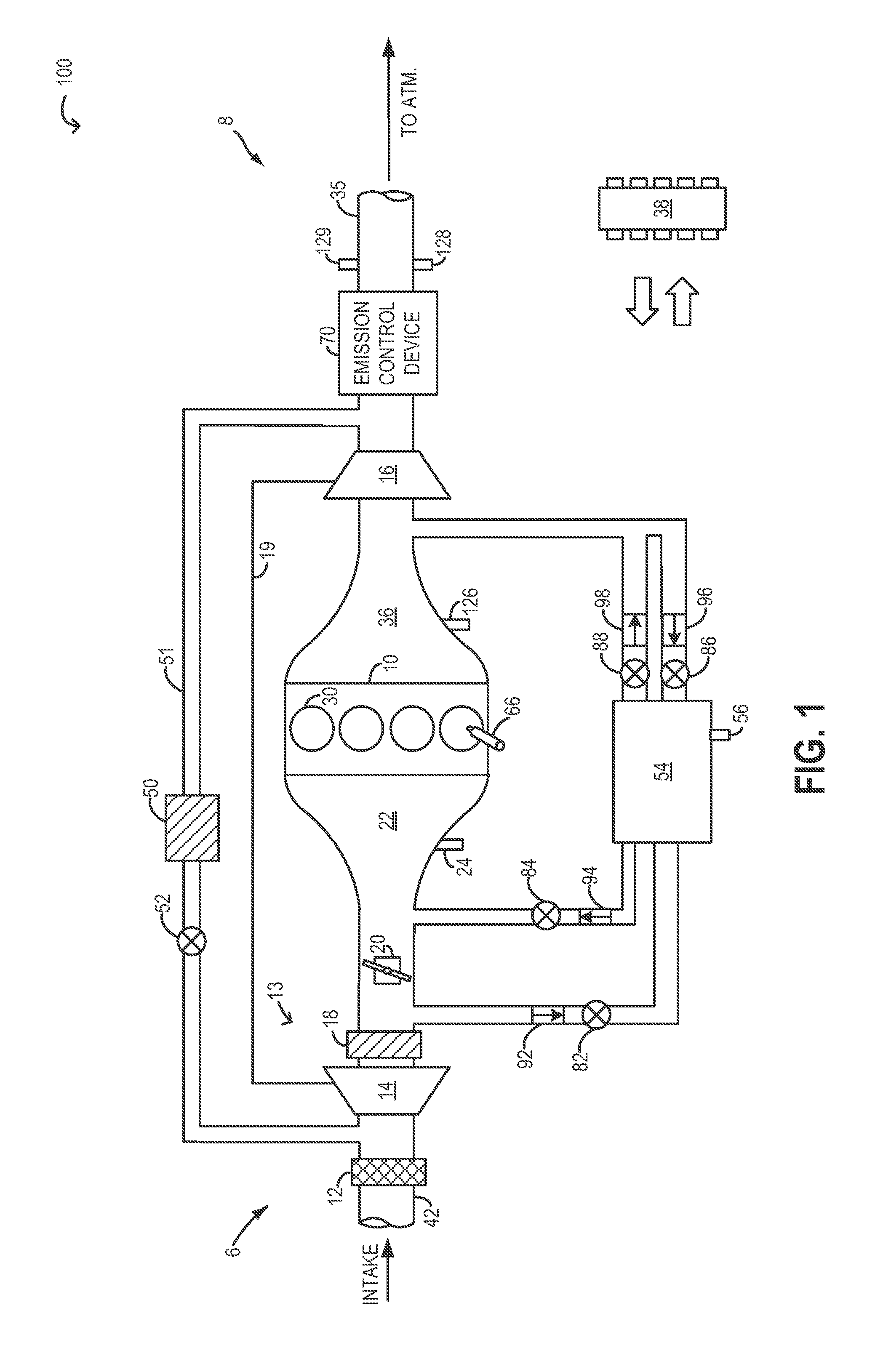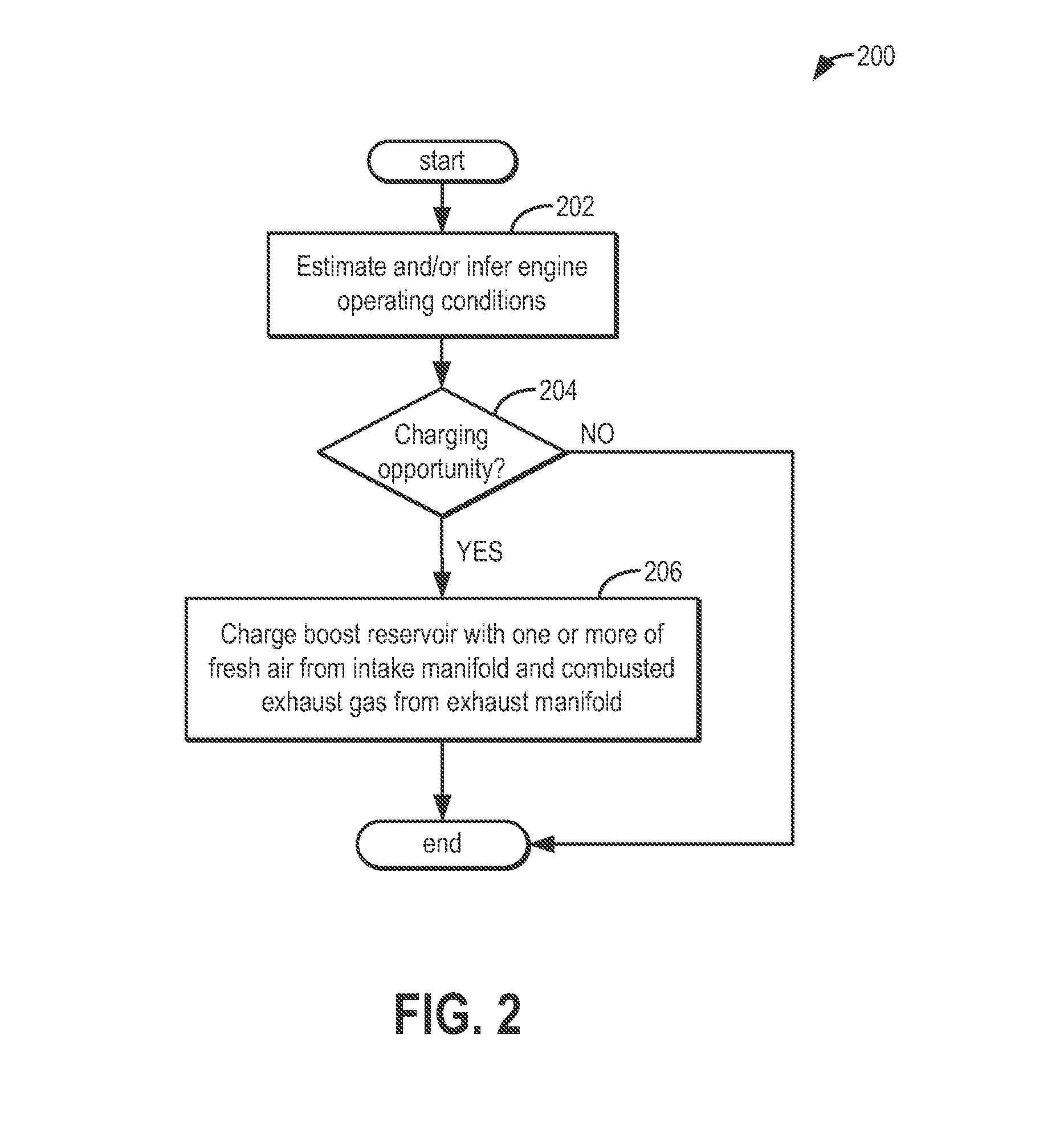Boost air management for improved engine performance
a technology of engine performance and boost air, which is applied in the direction of electric control, charge feed system, combustion engine, etc., can solve the problems of undesirable power lag, torque may not be available, power, fuel efficiency, emissions control performance of a boosted engine may suffer, etc., to achieve greater fuel efficiency, lower emissions, and power. the effect of boosting the engin
- Summary
- Abstract
- Description
- Claims
- Application Information
AI Technical Summary
Benefits of technology
Problems solved by technology
Method used
Image
Examples
Embodiment Construction
[0014]The following description relates to systems and methods for reducing turbo lag in a boosted engine including a boost air reservoir, such as in the engine system of FIG. 1. By discharging pressurized charge from the boost reservoir to the intake manifold or exhaust manifold in response to a tip-in, exhaust gas temperatures and pressures can be quickly raised, and a boosting device turbine can be rapidly spun-up. An engine controller may be configured to perform a control routine, such as the example method of FIG. 2, to charge the boost air reservoir with one or more of combusted exhaust gas from the exhaust manifold or fresh intake air from the intake manifold, when charging opportunities are available. The controller may be further configured to perform a control routine, such as the example method of FIG. 3, to discharge the pressurized charge from the reservoir into the intake manifold and / or the exhaust manifold based on engine operating conditions as well as the composit...
PUM
 Login to View More
Login to View More Abstract
Description
Claims
Application Information
 Login to View More
Login to View More - R&D
- Intellectual Property
- Life Sciences
- Materials
- Tech Scout
- Unparalleled Data Quality
- Higher Quality Content
- 60% Fewer Hallucinations
Browse by: Latest US Patents, China's latest patents, Technical Efficacy Thesaurus, Application Domain, Technology Topic, Popular Technical Reports.
© 2025 PatSnap. All rights reserved.Legal|Privacy policy|Modern Slavery Act Transparency Statement|Sitemap|About US| Contact US: help@patsnap.com



